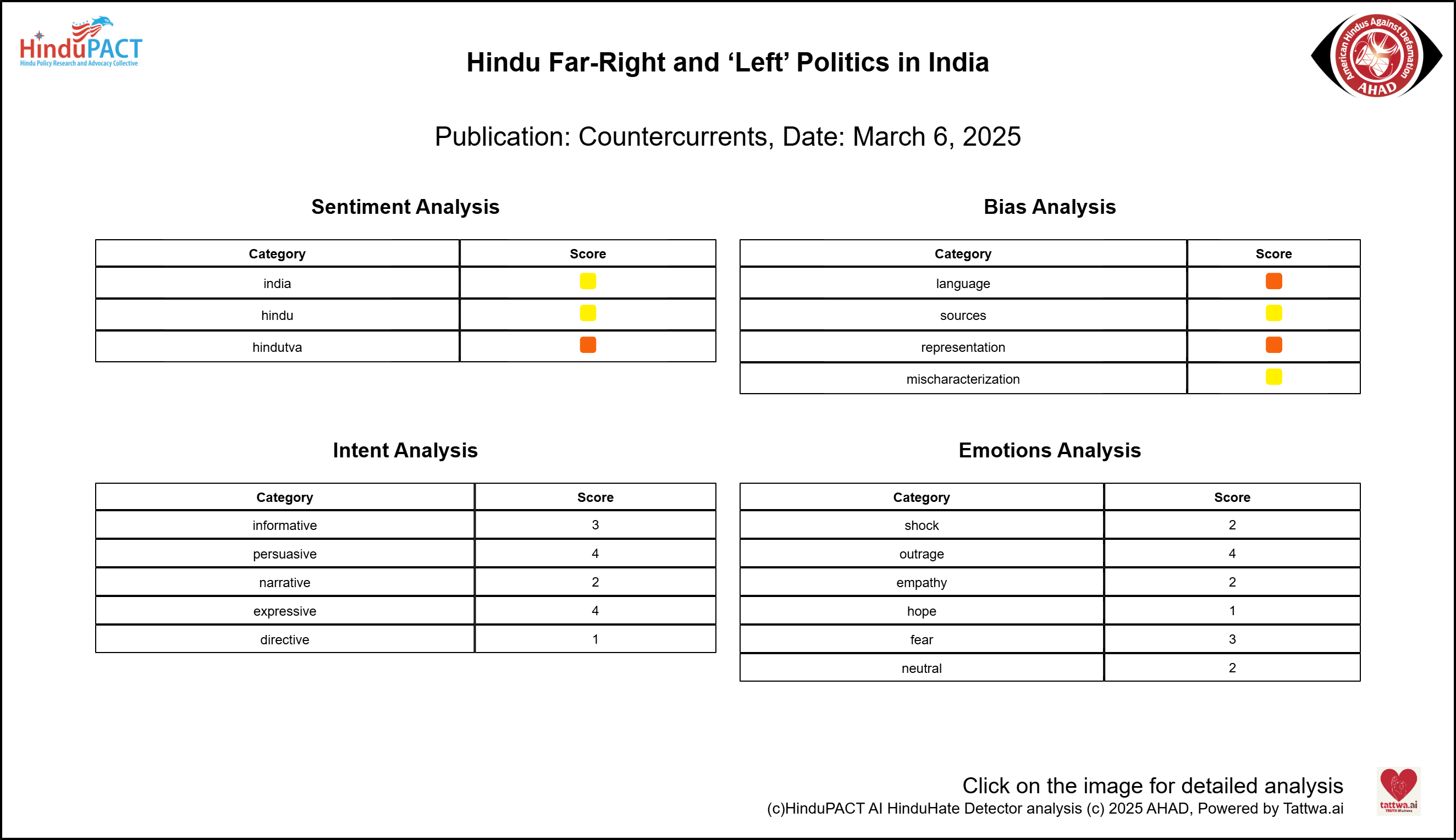Source: Date of Publication: Name of Publication: Abstract
The article examines the interplay between neoliberal globalization, the rise of Hindu far-right politics, and the role of leftist movements in India. It argues that neoliberalism and Hindutva mutually reinforce each other, benefiting upper-caste and upper-class interests while undermining the socio-political gains of subaltern groups. The piece also discusses the historical context of the Hindutva movement and its impact on India’s secular foundations.
Sentiment Analysis
| Aspect | Score | Traffic Light | Explanation | Tone | Framing | Sources | Mischaracterization | Headline |
|---|
| India | | | | | | | | |
| Hindu | | | | | | | | |
| Hindutva | | | | | | | | |
Bias Analysis
| Aspect | Score | Traffic Light | Explanation |
|---|
| Language | | | |
| Sources | | | |
| Representation | | | |
| Mischaracterization | | | |
| Framing bias | | | |
| Headline tone | | | |
| Expert selection bias | | | |
| Historical context bias | | | |
Intent Analysis
| Aspect | Score | Key Evidence |
|---|
| Informative | | |
| Persuasive | | |
| Narrative | | |
| Expressive | | |
| Directive | | |
Emotions Analysis
| Emotion | Score | Key Evidence |
|---|
| Shock | | |
| Outrage | | |
| Empathy | | |
| Hope | | |
| Fear | | |
| Neutral | | |
Overall Scores Analysis
| Metric | Score | Std Dev | Confidence Interval | Traffic Light |
|---|
| Overall Sentiment Score | | | | |
| Overall Bias Score | | | | |
| Overall Intent Score | | | | |
| Overall Emotion Score | | | | |
| Hindu Visibility Index | | | | |
| Narrative Shift Index | | | | |
| Hinduphobia Risk Score | | | | |
| Hindutva Alignment Score | | | | |
| Reader Influence Score | | | | |


